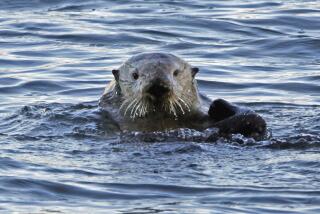Scientists find 507-year-old clam. Are older ones out there?
Ming is a clam. An ancient clam. You know when Columbus first arrived in America? That’s about the time when Ming was born.
For more than half a decade scientists believed that Ming the clam was 405 years old when it died, but new testing has revealed that it was in fact a lot older.
In a paper published in the journal Palaeo 3, researchers from Bangor University in North Wales say Ming was 507 years old when it was discovered in 2006.
Clam, that’s old.
Ming is an Artica islandica bivalve mollusk, also called an ocean quahog. In fall 2006, a team of scientists on a research cruise dredged it up from the ocean floor off the coast of Iceland. Like the other mollusks caught on that trip, Ming was flash-frozen on the ship and brought to a lab for further study.
PHOTOS: Weird sea creatures and strange fish
To determine how old the clam was, scientists counted the number of rings on its shell. Just like trees, clams have growth rings, with each ring representing the same amount of time. Clam growth rings are visible on the inside and outside of the shell, but the rings on the inside of the shell are better protected, and therefore usually more reliable.
The researchers, who have to kill the clams they study in order to learn more about them, nicknamed this ancient clam Ming because it had been around at the time of the Ming Dynasty.
As it turned out, though, Ming was even older than they originally suspected. Because Ming was so very old, some of the rings on the inside of the shell had gotten compressed, and it was difficult to determine just how many of them there were.
More recently, the same scientific team applied more sophisticated dating methods to Ming’s shell, including the carbon-14 method.
“We got it wrong the first time, and maybe we were a bit hastingly publishing our findings back then. But we are absolutely certain that we’ve got the right age now,” lead author Paul Butler of Bangor University told Science Nordic.
Although Ming’s age has been determined, its shell still has a lot of information to impart. Embedded in its rings in the form of oxygen isotopes are 500 years of clues about the changing ocean temperature. Scientists also hope to learn its secret to such a long life.
Ming is the oldest animal that humans have ever found and dated, but that doesn’t mean it is the oldest animal to have ever existed.
“It is statistically inconceivable that longer-lived individuals of the species do not exist in Icelandic waters as they seem to provide the ideal conditions for extreme longevity,” a University of Bangor representative wrote in a news release. “Clams with lifetimes in excess of 100 years have been found both in the Irish Sea and the North Sea.”
Oldest animals, biggest animals, weirdest animals: I love them all. Follow me on Twitter for more like this.
ALSO:
Ethereal, 8-foot-long ‘sea serpent’ caught on video
Pacific Ocean warming faster than it has in 10,000 years, study finds
‘Wasting’ disease turning West Coast starfish to mush; experts stumped







